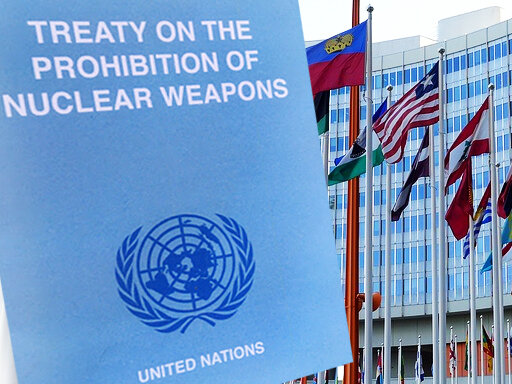
by Sehd Rushmeen 23 March 2024
The Treaty on the Prohibition of Nuclear Weapons (TPNW) has emerged as a game-changing instrument in the field of nuclear disarmament, providing new ideas and techniques to addressing the complex issues posed by nuclear weapons. The TPNW, which was adopted in 2017 and will go into effect in 2021, marks a coordinated worldwide effort to prohibit these weapons of mass destruction, recognising their destructive effects on both mankind and the environment.
One of the TPNW’s distinguishing features is its recognition of the gendered and environmental consequences of nuclear weapons. This is a substantial difference from past nuclear disarmament accords, which largely addressed the military and strategic components of nuclear arsenals. Recognising the special vulnerability of women and girls in conflict zones, as well as the long-term environmental repercussions of nuclear weapons use and testing, the TPNW emphasises the need for a more comprehensive approach to disarmament.
The TPNW negotiation process was marked by the active participation of over 135 states, including female diplomats and representatives from the Global South. This inclusive approach was critical in formulating the treaty’s terms, ensuring that the voices of those most affected by nuclear weapons were represented. The leadership of numerous female diplomats, including the president of the negotiating conference, demonstrated these countries’ commitment to promoting gender equality and inclusivity in disarmament initiatives.
Furthermore, the participation of Indigenous groups and civil society organisations provided an important component to the negotiations. Indigenous people, who have frequently suffered the brunt of nuclear weapons testing and development, have contributed important insights into the humanitarian and environmental consequences of these weapons. Their testimonials underscored the long-term effects of nuclear testing on their lands, emphasising the need for repair and help.
The TPNW’s prohibitions go beyond simple ban, establishing a comprehensive structure for victim relief and environmental repair. Articles 6 and 7 of the treaty urge states parties to work together to provide aid to those impacted by nuclear weapons use and testing, as well as to remediate the environmental damage caused by such activities. This represents a substantial break from prior treaties, which frequently lacked concrete mechanisms for dealing with the humanitarian and environmental repercussions of nuclear weapons.
The First Meeting of States Parties in 2022 demonstrated states parties’ commitment to implementing the TPNW provisions. The Vienna Action Plan, which contained concrete pledges on gender equality, victim support, and environmental cleanup, marked a significant milestone in the treaty’s implementation. The plan also emphasised inclusivity and cooperation, encouraging affected communities and Indigenous peoples to participate in disarmament efforts.
Looking ahead, the TPNW will confront various problems during its implementation. Universal participation, particularly from nuclear-armed states, remains an important goal. Furthermore, the pact’s success is dependent on states parties’ willingness to carry out their commitments under the treaty, including as assisting victims and repairing environmental damage.
TPNW marks a huge step forward in nuclear disarmament by introducing a new paradigm for dealing with nuclear weapons’ humanitarian and environmental implications. The TPNW has set a new benchmark for disarmament efforts by recognising the gendered and environmental implications of these weapons, as well as including various stakeholders in negotiations. Continued commitment and cooperation among states parties will be critical in realising the aim of a world without nuclear weapons.
